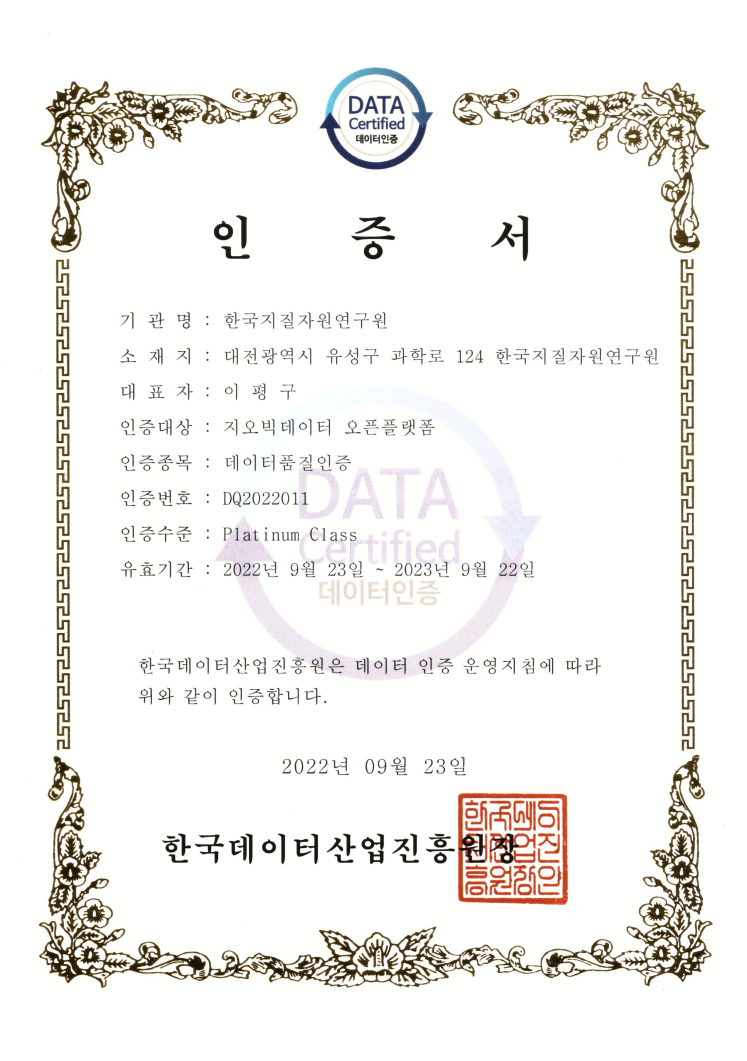남해 제4기 층서 및 퇴적환경 연구 (2)
상세정보
| 자료유형 | KIGAM 보고서 |
|---|---|
| 서명 | 남해 제4기 층서 및 퇴적환경 연구 (2) |
| 저자 | 장정해 |
| 언어 | KOR |
| 청구기호 | KR-99-[B]-01-1999-R |
| 발행사항 | 한국자원연구소, 1999 |
| 초록 | 1. 아래와 같이 2개 시추지점에서 非攪亂 퇴적물 코어를 확보하였다. SSDP-101(Site No.): 34。19.666′ N(Long.); 128。16.335′ E(Lat.); 72m(Hole Length); 60m(Water Depth); 1998(Remarks). SSDP-102(Site No.): 34。57.184′ N(Long.); 128。52.868′ E(Lat.); 41m(Hole Length); 40m(Water Depth); 1998(Remarks). SSDP-103(Site No.): 34。11.279′ N(Long.); 127。40.876′ E(Lat.); 72m(Hole Length); 42m(Water Depth); 1999(Remarks). SSDP-104(Site No.): 34。21.126′ N(Long.); 128。0.873′ E(Lat.) ; 78m(Hole Length); 60m(Water Depth); 1999(Remarks). 2. 탄성파자료를 토대로 시퀀스층서개념을 적용하여 해수면과 연계되는 퇴적층의 발달과정을 연구하면 후기 제4기 동안의 해수면 연계 퇴적작용과 그에 따른 퇴적층의 발달과정을 규명할 수 있을 것으로 예상된다. 3. 퇴적학적 및 탄성파 층서 연구결과 두 SSDP-102공을 제외하고 모두 시추공 자료는 해침과 해퇴를 반영하고 있는 것으로 해석되었다. 각 시추공의 대기노출, 화석부재, 하천영향 등으로 특징 지워지는 육성층의 분포가 확인되었고 상부는 각종 염수종 화석과 해양환경을 반영하는 퇴적구조를 배태하고 있는 해성층으로 구성되어 있다. 3. SSDP-102 코어 퇴적물의 원소 분석 결과 연구지역 퇴적환경에 영향을 미쳤던 지화학적인 조절 요소를 알 수 있었다. 퇴적층(Unit III)는 반 담수성 환경하에서 화학적 풍화를 상대적으로 많이 받은 퇴적환경으로 해석된다. 균질 泥로 구성된 상부 퇴적층(Unit I)은 세립질 퇴적물임에도 불구하고 탄산염 기원 Ca이 우세하고 존재하는 점으로 보아 해침 이후 생산성이 높은 표층수 환경의 영향이 강하게 작용한 것으로 사료된다. 5. 분석에 사용된 저서성 유공충 Asterorotalia concinna의 산소 및 탄소 동위원소 값의 분포확산을 살펴보았다(Fig.3). 61개의 points가 모두 ±1 내외의 값을 보이고 있는데 선택된 저서성 유공충이 서식 당시의 환경과 평형을 이루는 동위원소 값을 갖고 있다면, 이러한 분포는 담수의 영향을 받는 연안 환경과 받지 않는 외해 환경 사이의 중간적 환경을 지시한다 1. Results of drilling: cores were obtained from four sites as follows: SSDP-101(Site No.): 34。19.666′ N(Long.); 128。16.335′ E(Lat.); 72m(Hole Length); 60m(Water Depth); 1998(Remarks). SSDP-102(Site No.): 34。57.184′ N(Long.); 128。52.868′ E(Lat.); 41m(Hole Length); 40m(Water Depth); 1998(Remarks). SSDP-103(Site No.): 34。11.279′ N(Long.); 127。40.876′ E(Lat.); 72m(Hole Length); 42m(Water Depth); 1999(Remarks). SSDP-104(Site No.): 34。21.126′ N(Long.); 128。0.873′ E(Lat.) ; 78m(Hole Length); 60m(Water Depth); 1999(Remarks).2. According to interpretation of seismic profiles crossing the drilled sites, there are five sequences, namely Unit I, Unit II, Unit III, Unit IV and Unit V from bottom, separable by a reflector with good lateral continuity. If we apply the conception of sequential stratigraphy to the sea level fluctuation caused depositional processes, based on the results of seismic profiles, it will be possible to figure out the late Quaternary depositional processes in the context of sea level changes.3. According to the sedimentological and seismic stratigraphic analysis, most of SSDP sites showed transgression and regression sequences.4. Chemical analyses of elements for the sediment samples of SSDP-102core exhibit the geochemical factors which may influenced the sedimentary environments of the study area. The lower-most sedimentary sequence Unit III can be interpreted as an environment which was influenced dominantly by stronger chemical weathering under a semi-fresh water environment. Based on predominance of carbonate-originated Ca in the homogeneous mud sequence, a high productive surface water along with transgression may have controlled the upper-most sedimentary sequence Unit I.5. Scatter diagram represents oxygen and carbon isotopic values of benthic foraminifers (Asterorotalia concinna) which is analyzed (Fig. 3). All 61 points has value between +1 and -1. If isotopic values of selected benthic foraminifera are equilibrium with surrounding values. These distributions indicate transitional between coastal environment affected by fresh water and open marine environment |
| 페이지 | 82 p. |
| 키워드 | 남해, 제4기, 층서, 퇴적환경, SSDD101, SSDD102, SSDP103, 시추공, SSDP104 |
| 원문 |
유형별 보고서
- 569view
- 7download

댓글